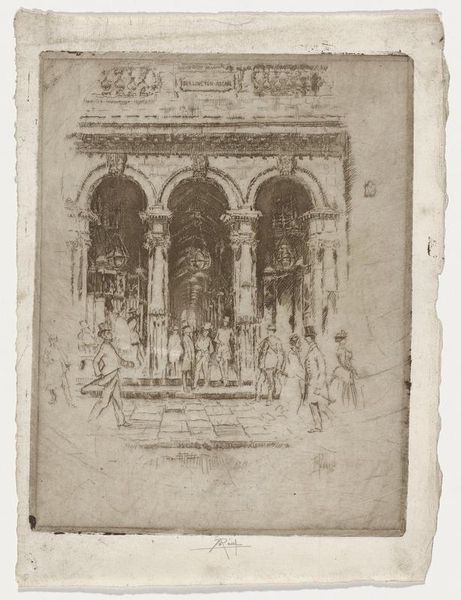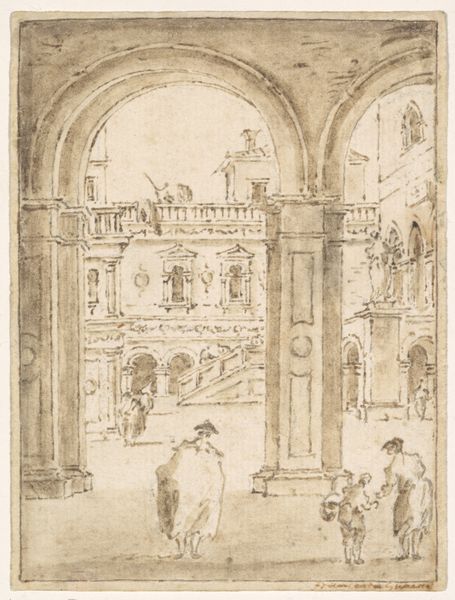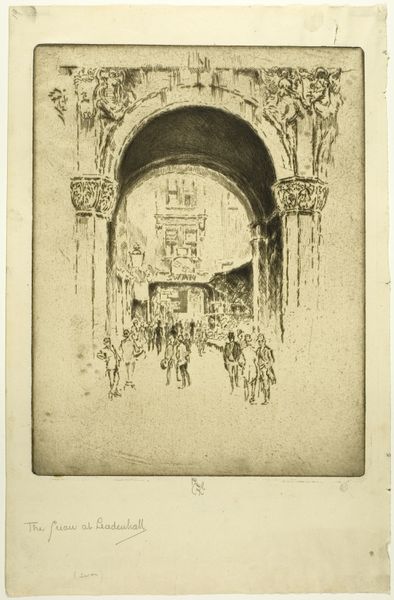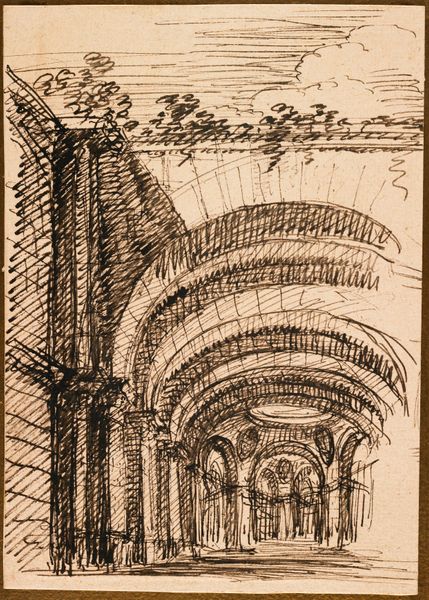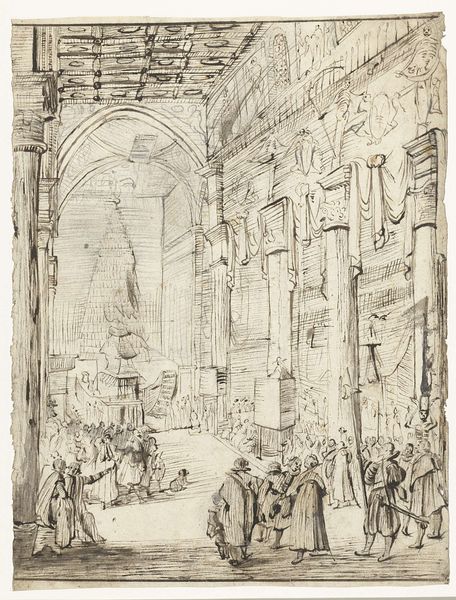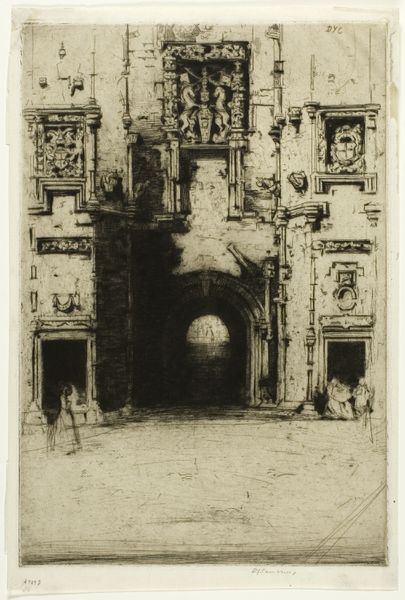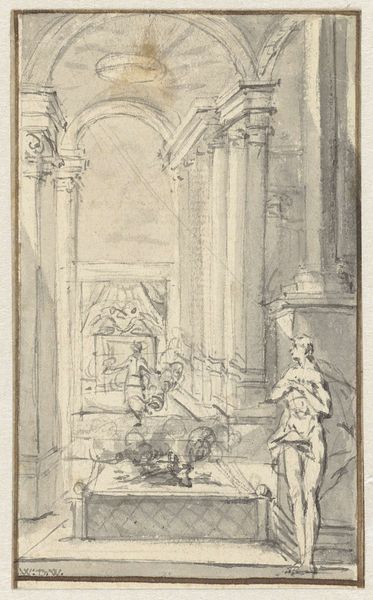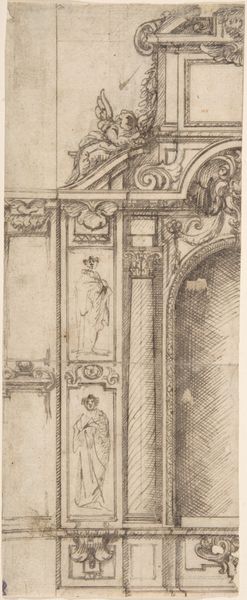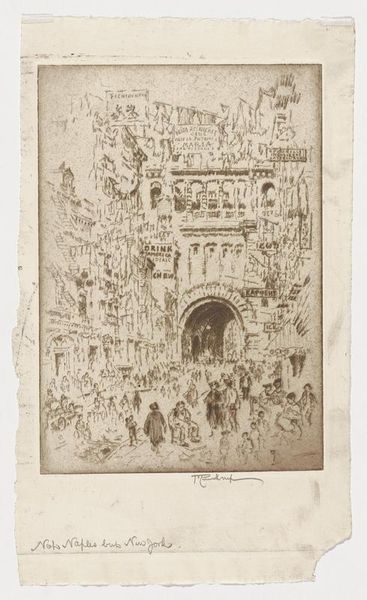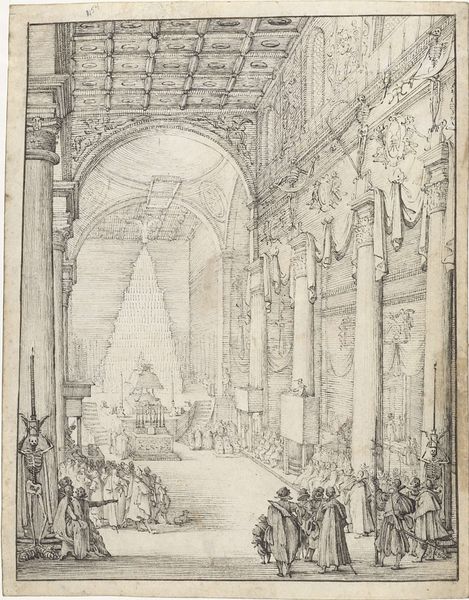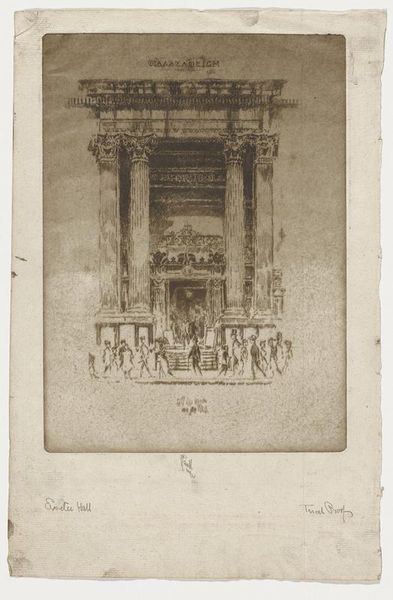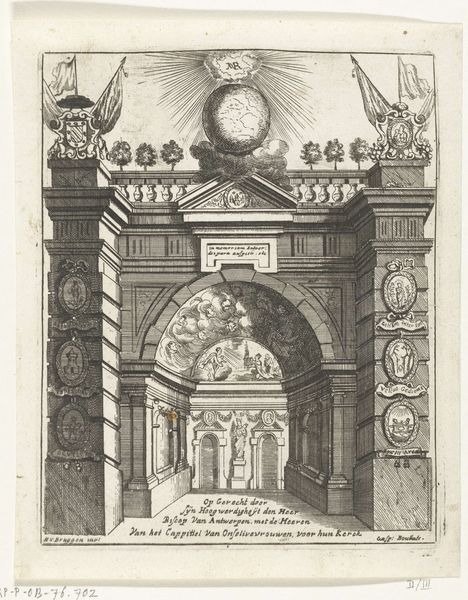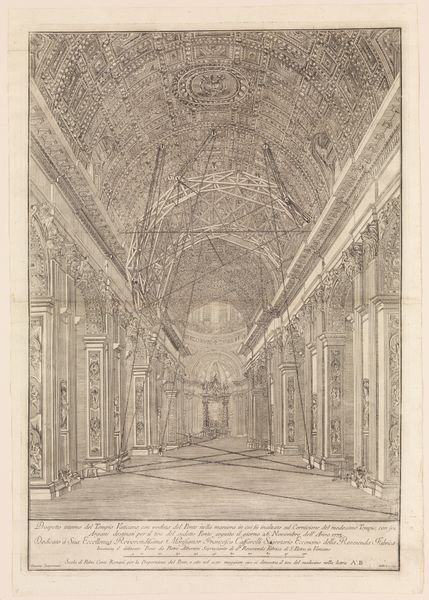
drawing, print, etching
#
drawing
# print
#
etching
#
etching
#
cityscape
#
realism
Dimensions: 10 7/8 x 8 1/2 in. (27.62 x 21.59 cm) (plate)11 1/8 x 8 11/16 in. (28.26 x 22.07 cm) (sheet)
Copyright: No Copyright - United States
Curator: This is Joseph Pennell's "Gate of Burlington House (Royal Academy)," an etching from 1887. The intricacy of the gate against the relative simplicity of the street creates a compelling contrast. What strikes you most about it? Editor: The level of detail is definitely remarkable, especially given that it’s a print. It’s almost photographic in its realism, but with this hazy quality to it, and a tangible emphasis on process that speaks to how it was made, I find it kind of ethereal. What materials and techniques would Pennell have used to create such detail, and what did these choices contribute to the overall work? Curator: Excellent question. Pennell's masterful handling of etching techniques allowed him to replicate the architectural detail while simultaneously foregrounding the materiality of the print. The varying depths of line suggest different biting times in the acid bath, reflecting labor and a direct engagement with material transformation. How does the stark contrast between the industrial production of the print and the aristocratic subject matter, the Royal Academy, speak to Victorian society? Editor: I suppose that even within the rigid class structure of the Victorian era, there was also industrialism that enabled some to cross class boundaries, like through buying or selling art like this… sort of blurring those traditional roles. Is that what you're getting at? Curator: Precisely. Consider how the medium itself—the mass-producible etching—challenges the supposed exclusivity of fine art displayed within those gates. Who had access to such images? What new markets and modes of consumption are implied here? Editor: That's a really good point. The print makes the architecture and art more accessible… like a democratization through reproducibility, which creates its own context outside of just the art itself, but also it makes me wonder if he had other intentions too? Curator: It raises pertinent questions about the intersection of artistic creation, social class, and industrial processes. What have you observed about the way that prints function today compared to 1887, in light of this production-driven background? Editor: That gives me a lot to think about, particularly regarding the relationship between labor, class, and art. It adds another layer to viewing these works. Curator: Exactly! By looking at the materials, process, and the context of its creation and distribution, we begin to understand this work as part of broader social and economic forces.
Comments
No comments
Be the first to comment and join the conversation on the ultimate creative platform.
